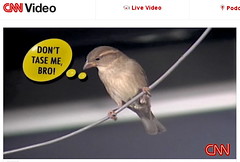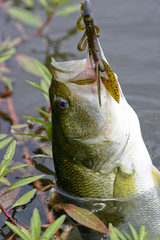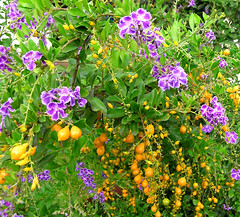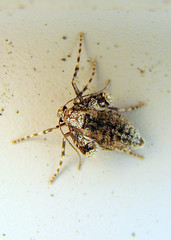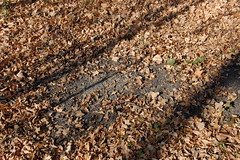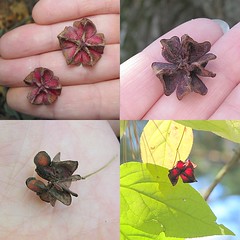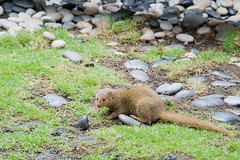Back in 2006, the ISW posted about the curious sighting of an infestation of kudzu vine (Pueraria montana var. lobata) out in Arizona. Ed Northam recently sent out an update to his Arizona Weed Notes listserver, and has kindly given me permission to reprint the note here, along with some excellent before and after photos:
In September 2006, Arizona’s first reported population of Kudzu [Pueraria montana (Lour.) Merr.] was discovered in Huachuca City, Cochise County.
During early October 2006, plant samples collected from that unusual, sprawling, densely leaved, woody vine, plus photos by Jeffrey Myers, AZ Dept. of Agriculture, was enough evidence for Dr. Ed Northam, Invasive Plants Program Manager, University of Arizona Cooperative Extension Office, Maricopa County to conclude that Arizona had a population of Kudzu.
Dr. Kelly Steele (plant taxonomist, AZ State University Polytechnic) also confirmed the initial vegetative diagnosis. DNA sequence analysis of leaf samples from Huachuca City by Dr. Martin F. Wojciechowski, Associate Professor, ASU Tempe, School of Life Sciences, matched published Kudzu DNA sequences.
Kudzu attracts attention from Arizona plant scientists and land managers because this foreign vine has demonstrated its ability to dominate and smother both land and vegetation. Mature pine trees, roadsides, telephone poles landscape plantings in southeastern states have been buried under Kudzu’s invasive growth.
Because of Kudzu’s reputation as a biotic invader, AZ Dept. of Agriculture personnel initiated an eradication process when identification was completed. This control measure is based on a new herbicide from Dow AgroSciences called Milestone VM.
Vince Aguiar, Dow’s range and pasture vegetation specialist for Arizona provided weed management expertise for eradication treatments that began in November 2006.
Milestone was applied to the Huachuca City Kudzu at a rate of 7 oz. per acre. This application was repeated in March and June 2007. Visual estimates in August 2007 indicated >97 percent of Kudzu biomass died as a result of those three treatments (see photos provided by Arizona Dept. of Agriculture).
Even though the Kudzu infestation appears to be controlled, treatments are planned for 2008 to complete eradication and will continue until new shoots cease to emerge; then occasional monitoring is needed to insure none of the underground root reserves survive and clone new Kudzu plants.
Source: Northam, Ed. Arizona Kudzu: One Year Update. ARIZONA WEED NOTES. Dec. 11, 2007. Phoenix, AZ.
Sounds like they will have nipped this invasion in the bud after another couple of years of treatments and monitoring. Go AZ!





